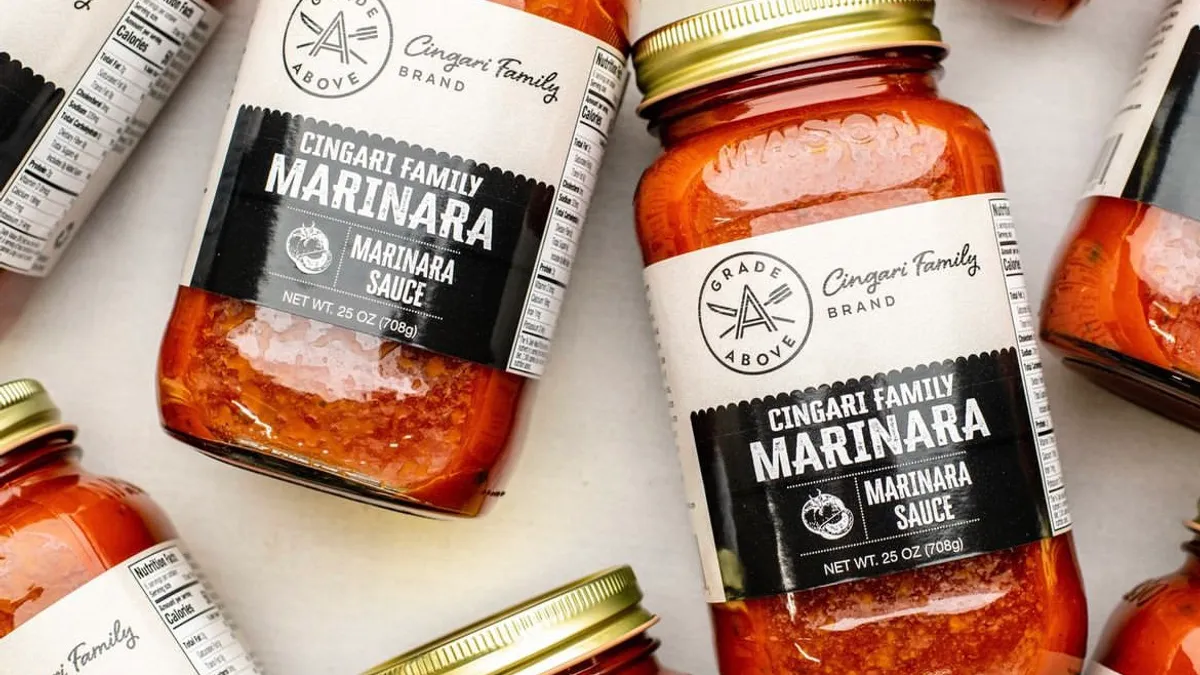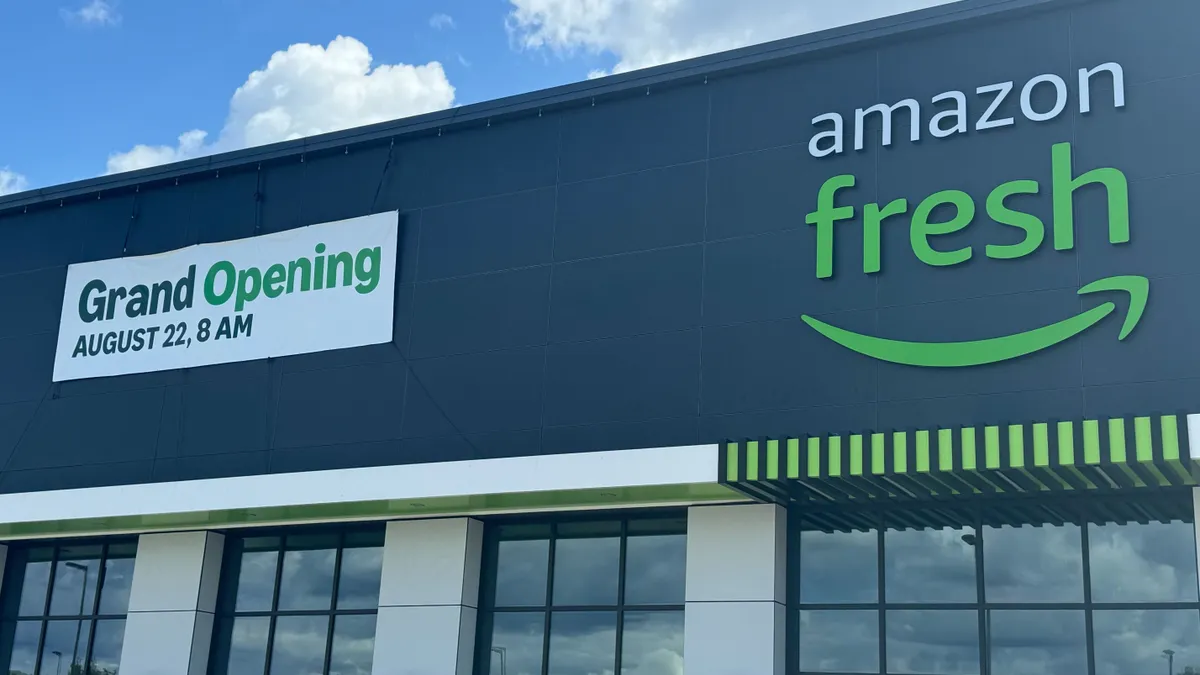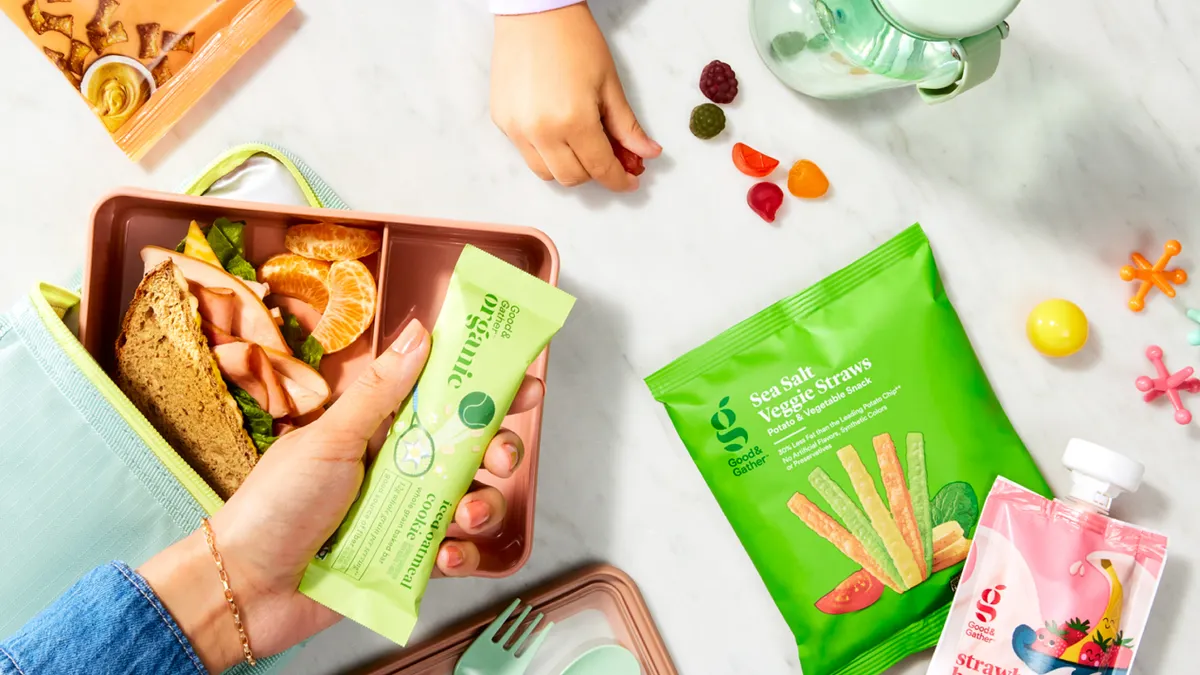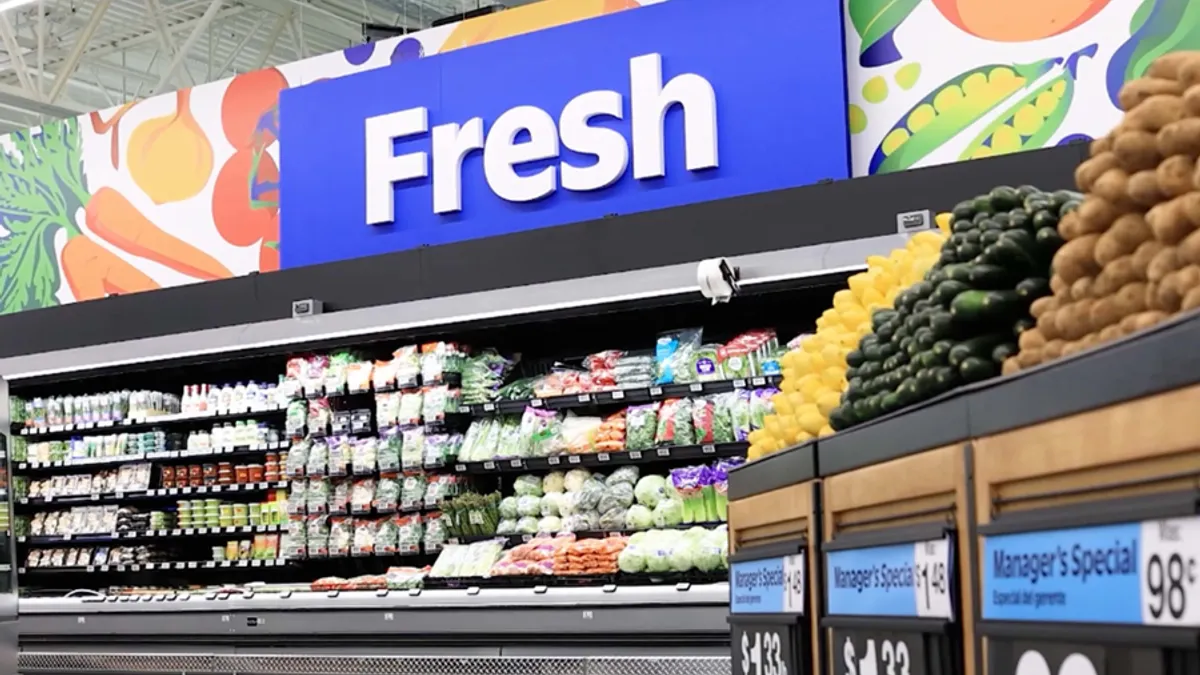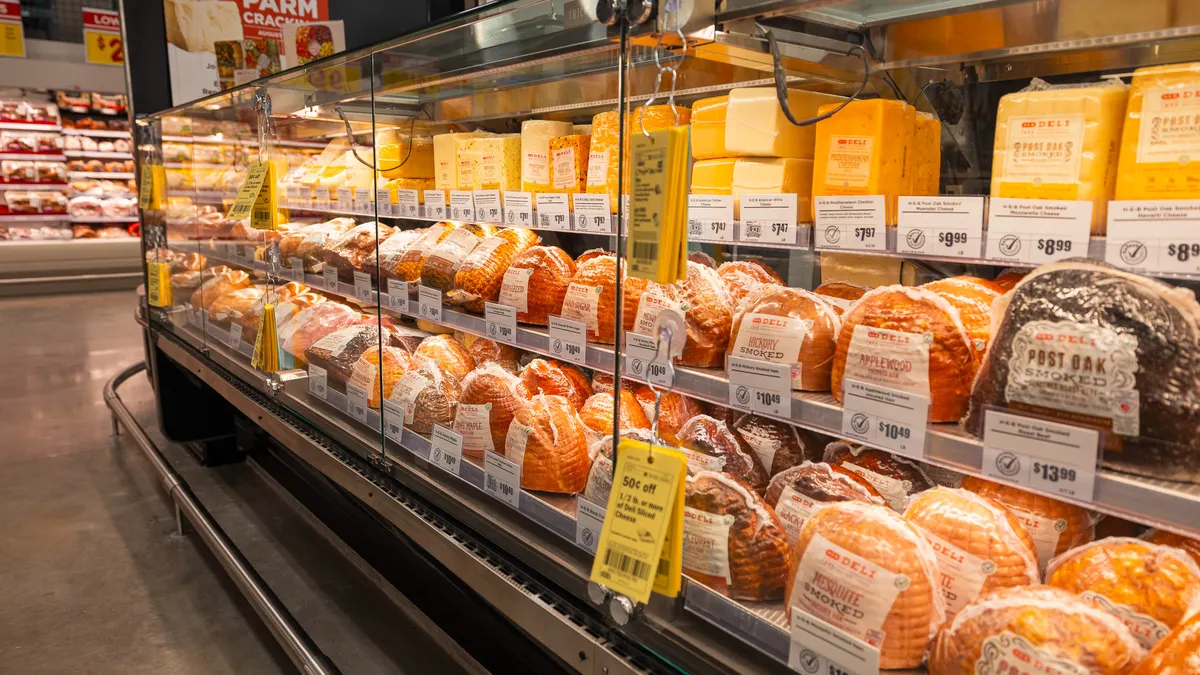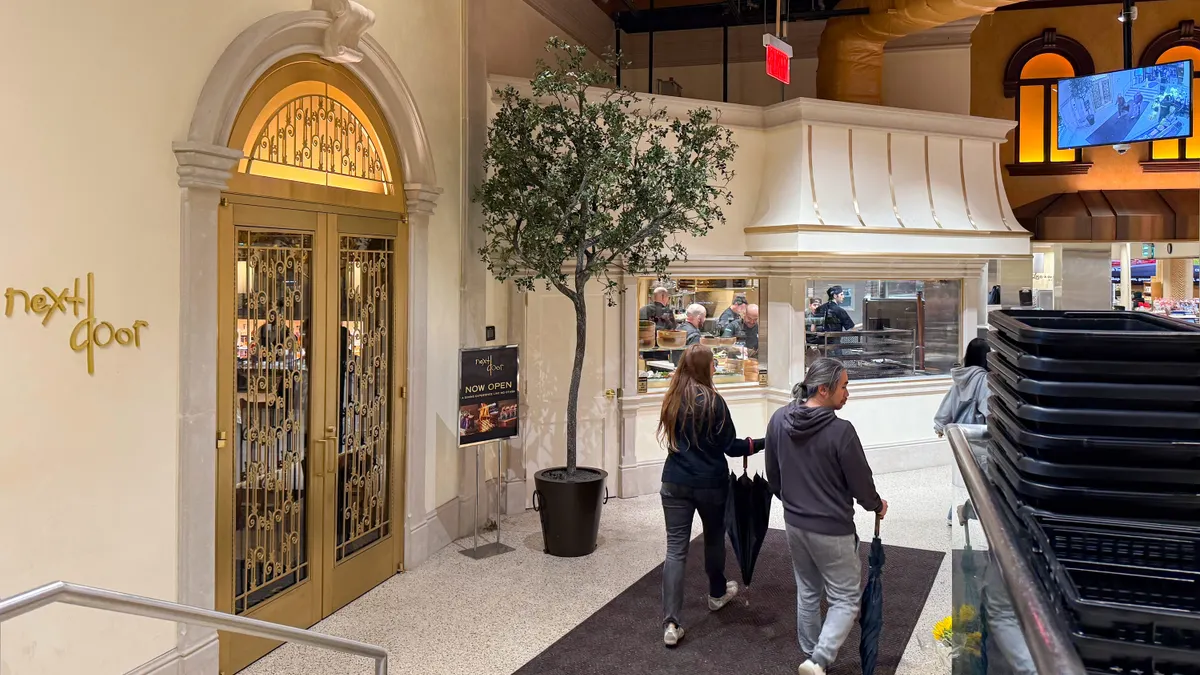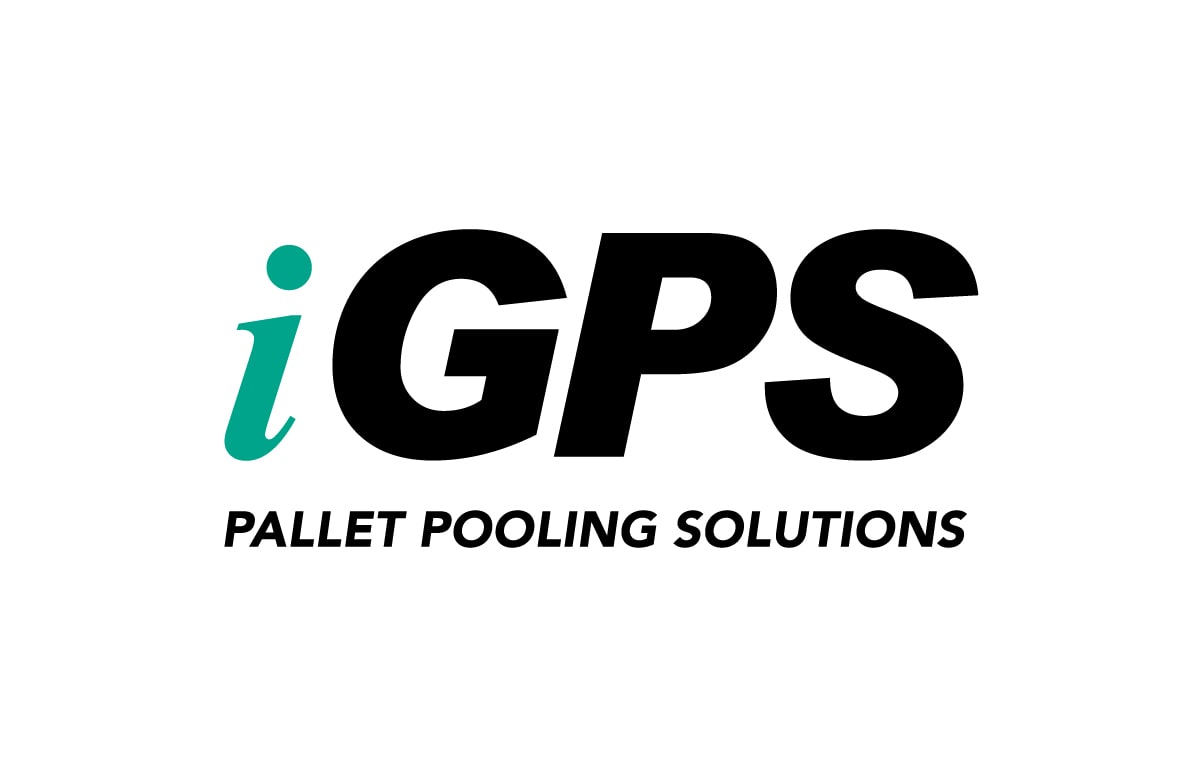Executives at Cingari Family ShopRite wanted to evoke memories of weekend family gatherings and honor the family-owned chain's Italian heritage. So they recently decided that the company should make its own marinara sauce.
The sauce, which was inspired by a family recipe and became available in the chain’s 12 Connecticut stores a few weeks ago, took more than a year and a half to create, including testing, formulating, sourcing tomatoes, designing the label and jarring. The company, which is part of the Wakefern Cooperative, worked with a graphic designer on a custom label and had about 30 people taste test the recipe, which is a takeoff a family recipe, said Chef David Cingari, who is the brother of the grocer’s president.
Now, customers can find the sauce both on shelves and as an ingredient in prepared foods offerings that require a red sauce, like lasagna, Cingari said. The sauce is part of the grocer’s efforts to build trust and loyalty among its shoppers through private brands as well as further elevate its food service department, which has been the chain’s fastest-growing department recently, Cingari said.
Cingari Family Markets is one of many grocers that are vertically integrating the production of certain private label items. This type of private label development can vary in scope, ranging all the way from controlling ingredient sourcing to handling recipe creation. Walmart and Costco, for example, have been beefing up their control of meat processing by running their own facilities.
While some retailers own farms and control the feed-to-finished-product pipeline, many grocers take a hybrid approach, said Jonathan Finch, vice president of client services at private label development firm Daymon. They might rely on a supplier partner for the ingredients and then use their own facilities to make the product, or hand off their proprietary recipe to a manufacturer.
“The idea is that the retailer sort of handled the operation that manufactured and added value to the packaging” whether or not they own the facility or farm where the product came from, said Dr. Ricky Volpe, associate professor of agribusiness at Cal Poly.
California Fresh Market, a two-store independent grocer in California, for example, has a vertically integrated line of breads made at a space the independent grocer rents at an industrial bakery, Volpe said.
Cingari ShopRite’s Grade Above private label brand, which includes meal kits, ready-to-eat options, freshly pressed juices, artisan baked specialty breads, cakes and more, are made in a kitchen linked to Chef David Cingari’s catering business.
While only a fraction of private label products are made this way, Finch and Volpe say they have seen in-house production grow in recent years and expect it to continue to increase as grocers keep boosting their private label assortments.
Giving private brand portfolios a boost
Vertically integrated private label has been growing over the last 10 years, thanks to work by major grocers such as Kroger, Albertsons and Ahold Delhaize, Volpe said. Finch noted that pandemic-related supply chain disruptions and manufacturer consolidation have pushed adoption even further along.
“I think you're seeing many more retailers trying to take in-house the ability to control, whether it's the actual manufacturer of the product or if it's the transportation of the product [or] the packaging,” Finch said.
“Developing something that you're going to make and bring to the table is way different than developing something that you're going to chill, then package, then deliver and then sell."

David Cingari
Chef, Cingari Family ShopRite
For grocers, private brands already tend to provide higher margins, differentiation for customers and the ability to diversify their product supply and not rely so much on outside suppliers, Volpe said, noting that vertical integration only further accentuates those three attractive factors.
Vertical integration can cut out supply chain middlemen, lower transaction costs and incentivize customer loyalty to unique store brand products exclusively available from that retailer, Volpe said.
“Private labels are strongest when they're vertically integrated,” he said.
Standout private label items, which could be created in-house, can help drive sales to other private label items.
“Having a private label, whether it's in a gourmet store or whether it's a supermarket, once you have it out long enough, people start trusting it and try other things across the brand,” Cingari said, noting that shoppers’ love of the chain’s prepared salads is helping to incentivize more store brand purchases.
Vertically integrated private label can also tie into the rise of premium store brand products by allowing a grocer to charge consumers more for a unique item that they can only buy from that retailer, Finch said.
Cingari said that grocers can consider charging more for their private brand items because of higher price points at restaurants: “It's a steal —$5.99, $6.99 for a humongous salad that you can barely finish.”
Breaking barriers with vertical integration
For grocers eyeing vertical integration, upfront costs and finding the right supplier partners are the main challenges, sources said.
“There's a great deal of upfront cost and risk capital expenditures, [and] institutional knowledge is needed,” Volpe said. “And if a small- to mid-sized grocer tries to vertically integrate ice cream or snack bars or whatever, and the recipe is bad, or unpopular, that can result in huge economic losses and probably can't afford [that.]”
Often armed with more capital and resources, larger grocers tend to have advantages with vertically integrated private brands over smaller retailers, Volpe said.
Albertsons, for example, operated 19 food production plants as of late February — including seven milk plants, three soft drink bottling plants, three bakery plants, two ice cream facilities, two grocery and prepared food plants, one ice plant and one soup plant, per its 10-K filing with the Securities and Exchange Commission. For fiscal 2022, 10.2% of its store brands by unit were manufactured in company-owned facilities, with the rest of its private label portfolio purchased from third parties, the grocer said in the filing.
“We closely monitor make-versus-buy decisions on internally sourced products to optimize their quality and profitability. In addition, we believe that our scale will provide opportunities to leverage our fixed manufacturing costs in order to drive innovation across our Own Brands portfolio,” the grocer noted.
Albertsons declined to comment for this story.
Walmart, meanwhile, announced Tuesday its first-ever owned and operated case-ready beef facility, which it plans to open in Olathe, Kansas, in 2025.
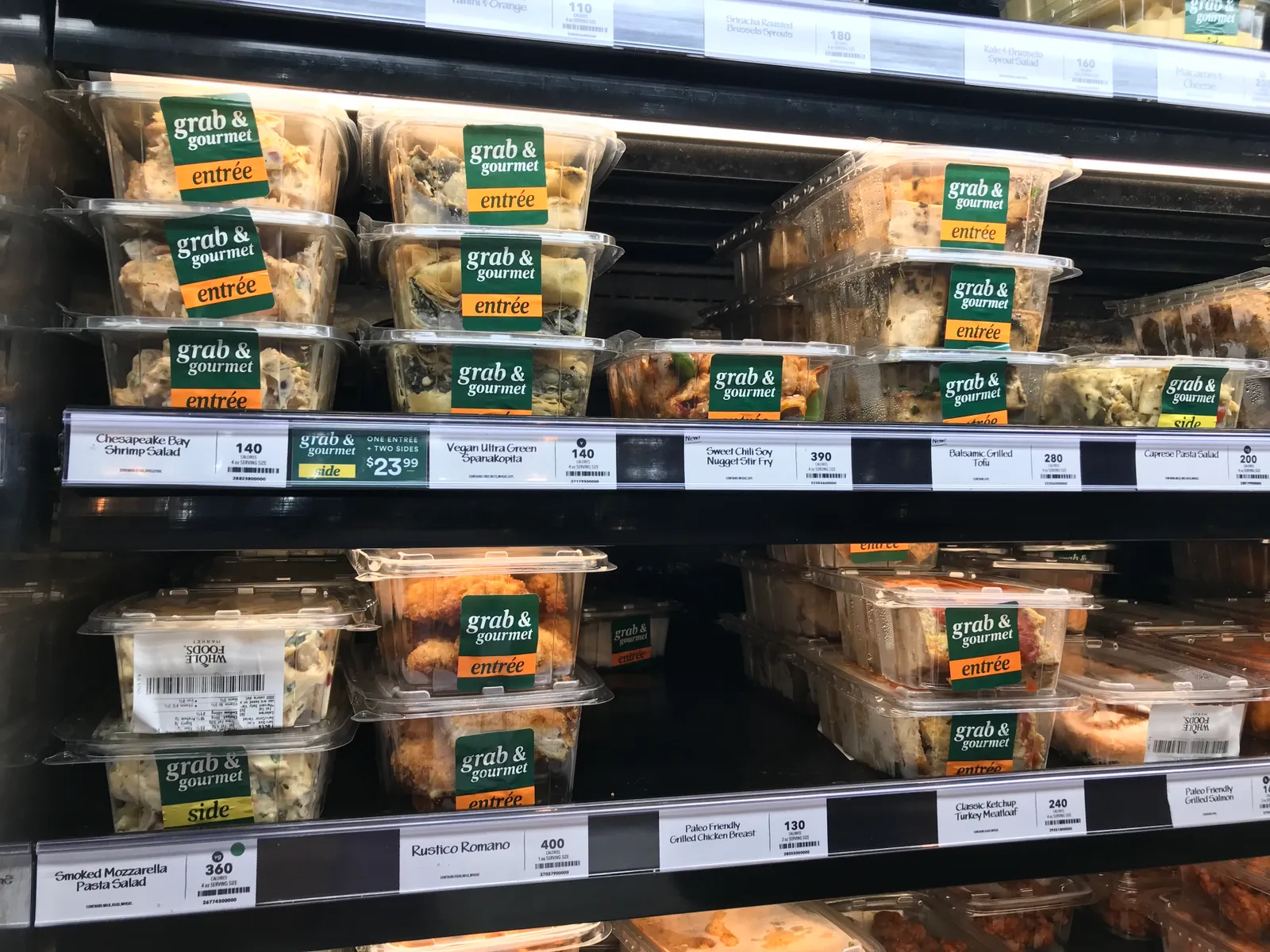
Grocers considering vertically integrated private label will want to understand the competition within categories, what value their product would bring and which investments — from machinery to capital to upfront costs — are needed, Finch said.
Having support from a grocery association might help smaller grocers in areas like product formulation, food, manufacturing and food science, Volpe said.
But some standardization measures can prove daunting for small retailers. Products that require a Universal Product Code (UPC), for example, can face hurdles with FDA approval, Volpe said.
Vertically integrated private label is changing how grocers find and work with vendors, sources said. Grocers are expanding their focus beyond finding the most cost-effective partner to factor in aspects like the ability to make different product formulations, cross-category manufacturing capabilities or flexibility with recipe tailoring, Finch said.
Cingari, for example, said he was particular about finding the right type of tomatoes for the marinara sauce. Once his team settled on a recipe, they did extensive testing, including tasting the sauce several days after the jar was opened, to perfect the flavor.
Cingari also stressed that cold chain control is critical for food safety and flavor.
“For anyone that is going to start this out — they may know this already or not — but developing something that you're going to make and bring to the table is way different than developing something that you're going to chill, then package, then deliver and then sell and have a four-, six-day shelf-life,” Cingari said.

Some categories are easier than others
Vertically integrated private label tends to lend itself better to certain categories over others, Volpe and Finch said.
A lot of retailers have already embraced in-house production in fresh areas, such as bakery items and ready-to-eat meals, Finch said. Bakery tends to be an easier category for vertical integration due to its smaller list of required ingredients, Volpe said.
Vertically integrated products that rely on crops like fruits, vegetables and nuts are more challenging to make because the ingredient sources are more geographically specific and the concentration costs are higher, Volpe said.
“When you think about things like sauces, when you think about products like soup that could be shelf stable or products that could be shelf stable when placed into aseptic type packaging — those are, I would say, lower barrier-of-entry for retailers to really control more of that overall supply chain process and be able to bring things in-house to provide their own uniqueness, unique flavors and things that really their consumer can’t get anywhere else,” Finch said.
Finch added that over-the-counter medication is one of the most challenging categories to produce at any level in-house, due to audits, government oversight and raw material procurement.
Cingari’s stores plan to bring the production of even more private label products in-house in the near future. Up next for its Grade Above line is a vodka sauce along with several sides, including orange- and grapefruit-marinated beets, which will become available in the coming weeks, Cingari said.
Correction: A previous version of this story misstated Jonathan Finch’s title.



